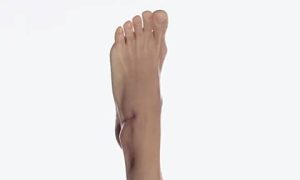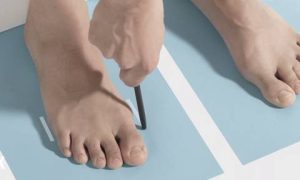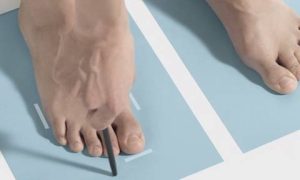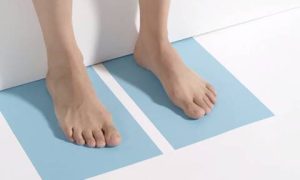How to Know if You Have Wide Feet?
Many people go through life without ever measuring their feet. This has serious consequences because wearing poor-fitting shoes can lead to foot conditions like painful blisters, bunions, plantar fasciitis, and so forth. The real problem here is that people typically try to describe their feet through shoe size, which focuses principally on foot length rather than foot width. Millions of people around the globe have wide feet and this causes many of these individuals to wear poor-fitting footwear. So, how do you discern whether you have broad feet and how do you know if you require wide-width shoes? Read on to find out.
Do You Have Wide Feet? Here’s How to Tell
Men’s & Women’s Shoe Size Letters
| Men | Letter | Women |
|---|---|---|
| 2A | Narrow | |
| Narrow | B | Standard |
| Standard | D | Wide |
| Wide | 2E | Extra Wide |
| Extra Wide | 4E |
Women’s Shoe Width Chart
| US Sizes | AA (Narrow) | B (Average) | C/D (Wide) | E (Extra-Wide) |
|---|---|---|---|---|
| 5 | 2.8″ | 3.2″ | 3.55″ | 3.95″ |
| 6 | 2.95″ | 3.3″ | 3.7″ | 4.05″ |
| 7 | 3.05″ | 3.45″ | 3.8″ | 4.2″ |
| 8 | 3.2″ | 3.55″ | 3.95″ | 4.3″ |
| 9 | 3.3″ | 3.7″ | 4.05″ | 4.45″ |
| 10 | 3.45″ | 3.8″ | 4.2″ | 4.55″ |
| 11 | 3.55″ | 3.95″ | 4.3″ | 4.7″ |
| 12 | 3.7″ | 4.05″ | 4.45″ | 4.8″ |
Men’s Shoe Width Chart
| US Sizes | C (Narrow) | D (Average) | E (Wide) |
|---|---|---|---|
| 5 | 3.2″ | 3.4″ | 3.6″ |
| 6 | 3.3″ | 3.5″ | 3.7″ |
| 7 | 3.4″ | 3.6″ | 3.75″ |
| 8 | 3.5″ | 3.75″ | 3.94″ |
| 9 | 3.6″ | 3.94″ | 4.10″ |
| 10 | 3.75″ | 4″ | 4.2″ |
| 11 | 3.9″ | 4.10″ | 4.3″ |
| 12 | 4″ | 4.3″ | 4.4″ |
| 13 | 4.10″ | 4.3″ | 4.6″ |
Do I have wide feet?
While there are some visual clues you can use to discern if you have broad feet, measuring your feet is undoubtedly the best method to ascertain your correct feet size.
See also: How to Measure Your Feet for Shoes
Follow the steps below:
Gather the tools you will need:
You will need a measuring stick or tape measure, a piece of paper, and a pen. Also, put on the socks that you typically wear with your shoes before you begin the measurement. Find the flattest section of the floor and set the paper on it. That is where you will do the measurement.
Measure in the evening or late in the afternoon:
The reason for this is because as the day progresses, your feet undergo various strains and stresses and they react by swelling. For this reason, the results you get by taking your feet’ measurement in the morning might not be your actual feet size.
Outline and measure
Now that you have taken care of the finer details, it is time to do the real measurement. Standing on your paper, trace each foot’s outline using your pencil or pen. After that, measure your feet’ width and length using the outline you traced. To get your foot’s width, you need to measure the 2 broadest ends on your foot. To get your foot’s height, measure the gap between your heel and the longest toe.
Measure both feet:
Since one foot is typically a little broader or longer compared to the other foot, it is vital you meticulously measure both feet. After getting the correct measurement for your feet, you can use a shoe sizing chart to determine your proper shoe size.
After measuring your feet and discover that you require broad-width shoes, it is time to find the ideal shoes for your feet. Also, always remember that the only method to avoid developing broad feet issues is to get the proper fitting shoes.
Why do I have wide feet?
You may have broad feet if it is hard for you to find shoes that do not cause your feet to feel cased-in. While this is not something you should worry about, there are certain things you should be aware of concerning having broad feet.
See also: How to Choose the Right Shoes for Your Feet
Health Problems:
Wide feet may be caused by health problems. For instance, health issues like kidney disease, diabetes, and heart problems sometimes result in edema (the medical term for swelling), which may broaden your feet.
Genetics:
Whether you have broad feet or not may also be a result of Mother Nature. Genetics is the reason why people have different eye colors, height, hair color, and feet width. Being born with broad feet is not essentially a bad thing. You simply have to make shoe choices according to your foot length and foot width.
Weight Problems:
As you gain weight, your feet also increase in size. Wide feet caused by excessive weight gain can be addressed through a program of regular exercise and a healthful diet.
Flat Feet:
Having flat feet can lead to fallen arches. Consequently, the toes will spread out naturally to produce more balance. If you have flat feet because of an injury (for example an ankle sprain) or excessive strain on the feet (for example standing all day at work), there are exercises and simple treatments that can help resolve the problem.
See also: Do Flat Feet Need Arch Support?
Bunions:
The size of your feet’ bones will largely influence how broad your foot is. Bunions are an acquired foot deformity that can cause your foot to widen. The best way to prevent foot deformities like bunions is by wearing appropriate fitting shoes at all times.






